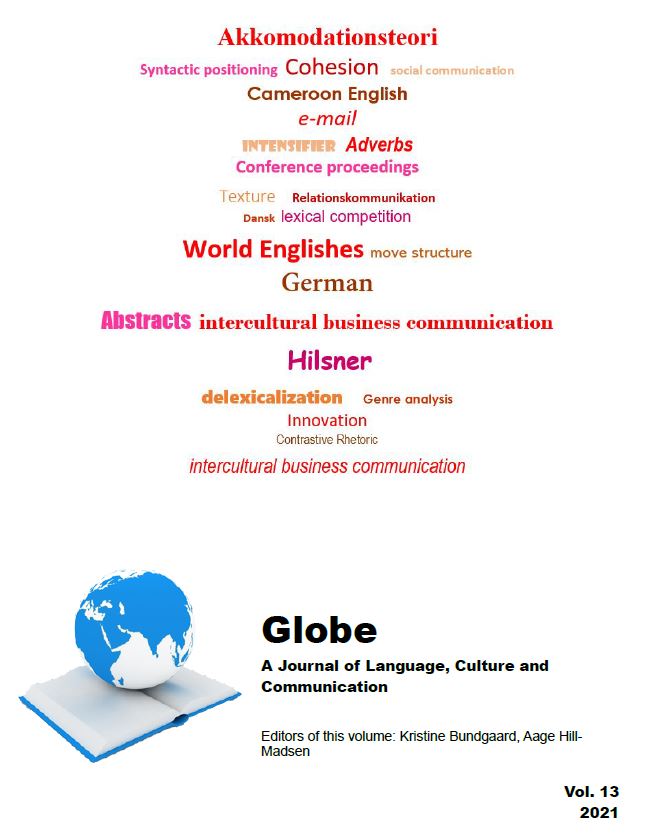A cross-cultural study of semantic ties in the abstracts of conference proceedings
DOI:
https://doi.org/10.5278/ojs.globe.v13i.6749Abstract
Connectedness in research article abstracts plays a vital role for them to be able to attract a broader readership. It also enhances abstracts' potential for acceptance at local and international conferences. In view of this, the study investigates variations in the strategies that writers from Anglophone and Francophone settings use to create connectedness in their conference paper abstracts. The data for this study comprise 50 abstracts submitted by these two groups of writers to the 30th West African Languages Congress and the 10th Linguistics Association of Ghana (LAG) Conference. For analytical methodology, it employs Halliday and Hasan's (1976) Cohesive Theory, which is complemented by Kaplan's (1966) Contrastive Rhetoric Theory. The findings reveal that the writers from the two cultural backgrounds employ similar strategies such as references, conjunctions, substitution, ellipsis, synonyms and repetition in maintaining connectedness in their abstracts. The differences between these two categories of writers are linked to the frequency with which these connectives are deployed in their respective abstracts. The study has implications for Contrastive Rhetoric Theory, by proving that people who belong to the same discourse community to a large extent demonstrate similar writing styles irrespective of their different cultural backgrounds.
Downloads
Published
Issue
Section
License
Articles published in Globe: A Journal of Language, Culture and Communication are following the license Creative Commons Attribution-NonCommercial-NoDerivs 3.0 Unported (CC BY-NC-ND 3.0). Authors retain copyright and grant the journal right of first publication with the work simultaneously licensed under a Creative Commons Attribution License: Attribution - NonCommercial - NoDerivs (by-nc-nd). Further information about Creative Commons


